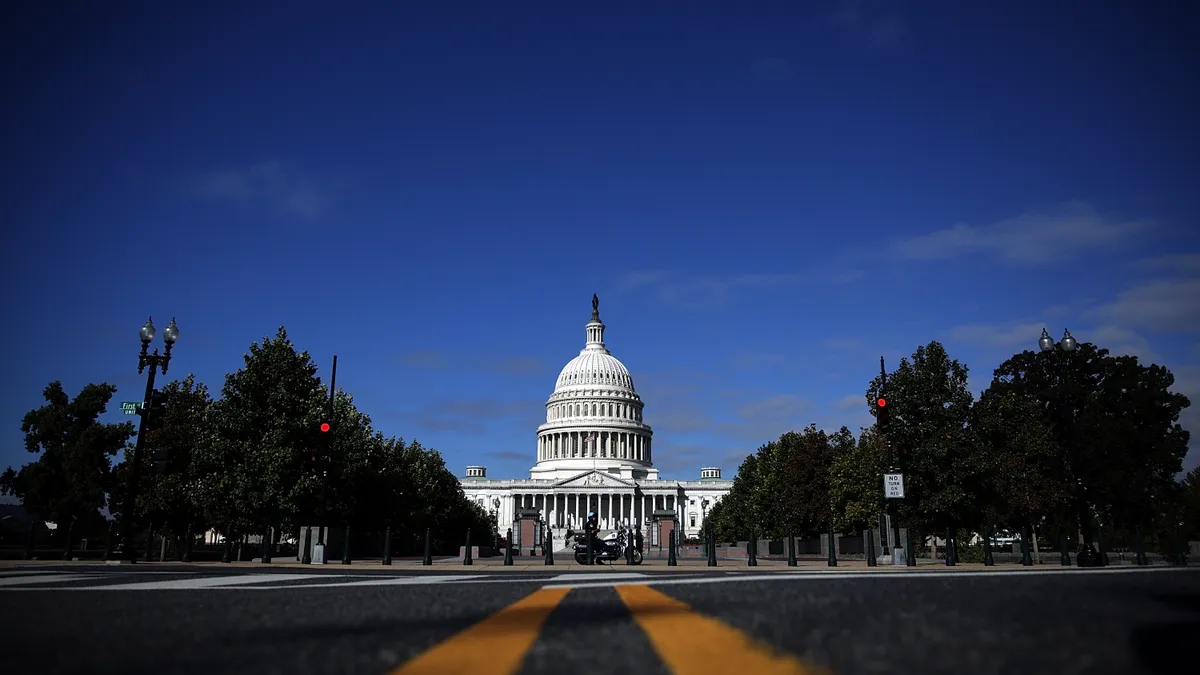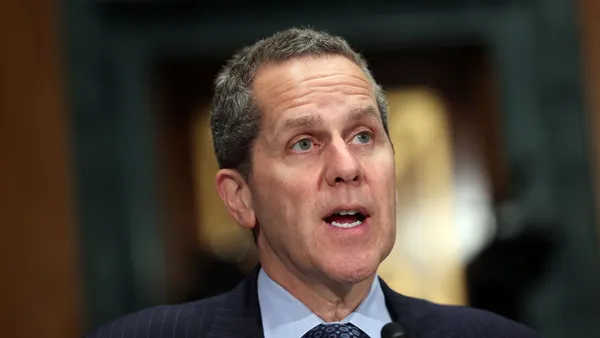Rising interest rates and rumors and misconceptions spread through social media led to an unprecedented bank run which ultimately sealed the fate of the now-collapsed Silicon Valley Bank, former CEO Greg Becker told lawmakers at a hearing on Tuesday.
During his congressional testimony in front of the Senate Banking Committee, Becker said no bank would have been able to withstand the mass exodus of deposits that the firm experienced in the days before regulators took over the Santa Clara, California-based bank on March 10.
Spooked by the regional lender’s announcement of a $1.8 billion loss, depositors withdrew $42 billion in 10 hours, roughly $1 million every second, Becker said.
“I do not believe that any bank could survive a bank run of that velocity and magnitude,” Becker said in written testimony submitted to the committee.
SVB’s collapse at the time was the second-largest bank failure since the 2008 financial crisis. San Francisco-based First Republic Bank, which collapsed earlier this month, became the latest firm to succumb to the banking crisis, supplanting SVB as the nation’s second-largest firm to fail since Washington Mutual in 2008.
Executives from Signature Bank, another regional lender that failed days after SVB, also attended Tuesday’s hearing, marking the first time executives from the two collapsed firms appeared in a public setting.
In his opening remarks, Senate Banking Chairman Sherrod Brown, D-OH, said both banks were “fatally mismanaged.”
“When you put other people’s money, and our broader economy, at risk, there must be accountability for that level of mismanagement,” he said. “Running a bank, as you know or should know, is unlike running any other company.”
The hearing comes less than three weeks after regulators released separate post mortems on the two bank failures. In its report on Signature, the Federal Deposit Insurance Corp. pinned most of the blame on the bank’s poor management, while the Federal Reserve’s report on SVB blamed the firm’s downfall on its inability to manage interest rate risk in addition to the central bank’s oversight failures.
Becker, however, said he did not agree with the Fed’s claim that the bank failed to manage interest rate risk, and said SVB’s actions were based on messages from the central bank that it planned to keep interest rates low.
“[T]hroughout 2020 until late 2021, the messaging from the Federal Reserve was that interest rates would remain low and that the inflation that was starting to bubble up would only be ‘transitory,’” he said.
During this time, SVB invested in highly rated government backed securities, safe assets which were backed by the U.S. government, Becker said.
Sen. Tim Scott, R-SC, however, said the bank’s leadership should have seen the signs that interest rates would continue to rise.
“Anyone who paid close attention to the economy over the past two years could have plainly seen that the Federal Reserve was going to continue to increase interest rates,” said Scott, the top Republican on the committee.
Becker told lawmakers misinformation and rumors spread through social media contributed to the March bank run that led to the firm’s collapse.
The media’s comparison of SVB to the crypto-heavy Silvergate, which announced a voluntary wind down in the days leading up to SVB’s closure, sparked fears among SVB depositors, he said.
“Despite stark differences in our business models, news reports and investors wrongly lumped SVB and Silvergate together,” Becker said.
SVB’s closure created a crisis of confidence in the banking sector, which led to a similar spiral at New York-based Signature Bank, which was taken over by regulators just days later.
Former Signature Chairman Scott Shay and former Signature President Eric Howell also attended Tuesday’s panel.
During their opening remarks, Shay and Howell, told lawmakers they thought regulators acted prematurely in closing the New York-based bank, which had strong ties to the digital asset sector.
“I was confident that Signature Bank could withstand the economic earthquake that occurred on that day,” Shay said, “Although I believed that the bank was in a strong position to weather the storm, regulators evidently saw things differently.”
In his opening remarks, Howell shared Shay’s sentiment that the bank would have survived the turmoil.
“I believe the bank was well capitalized, solvent and had sufficient borrowing capacity to withstand these and future withdrawals,” he said.
Taking place at the same time as Tuesday’s Senate hearing, House lawmakers also heard testimony from bank regulators regarding the recent bank failures.















